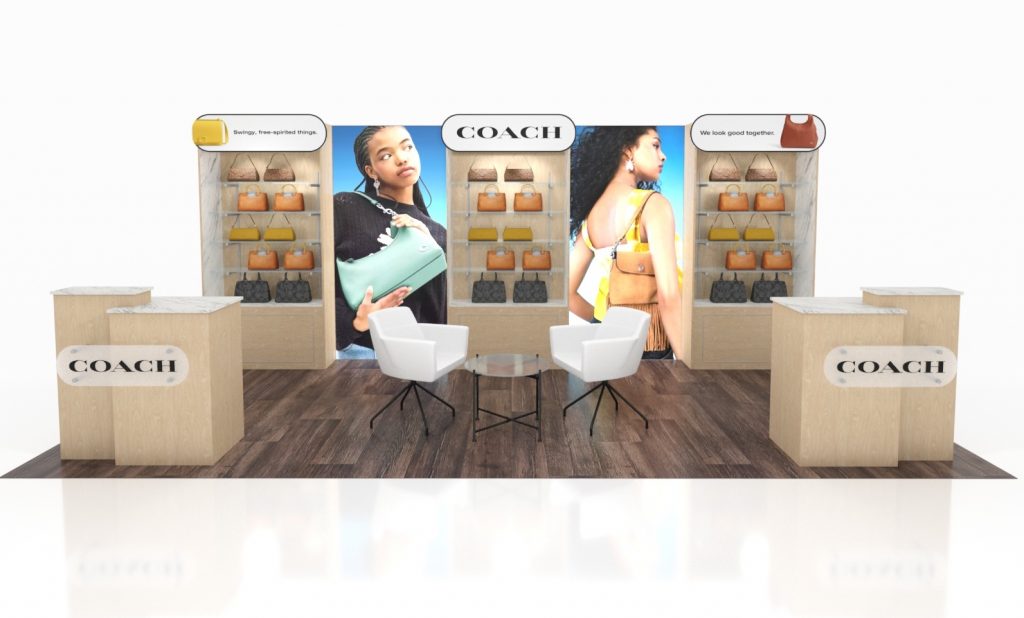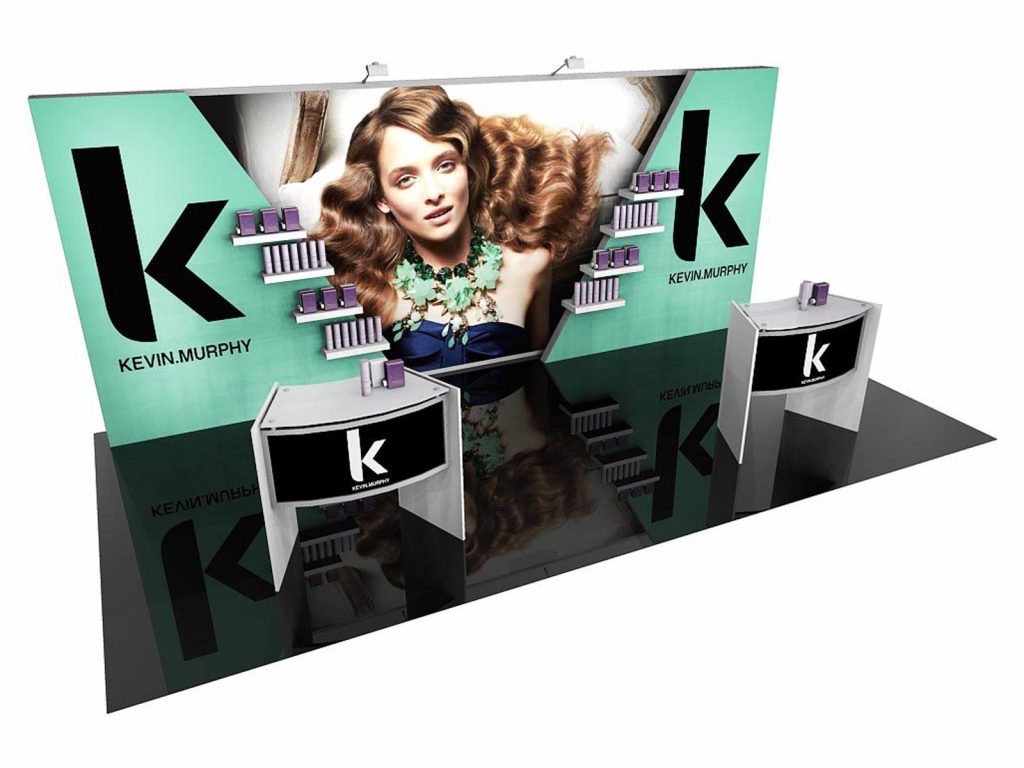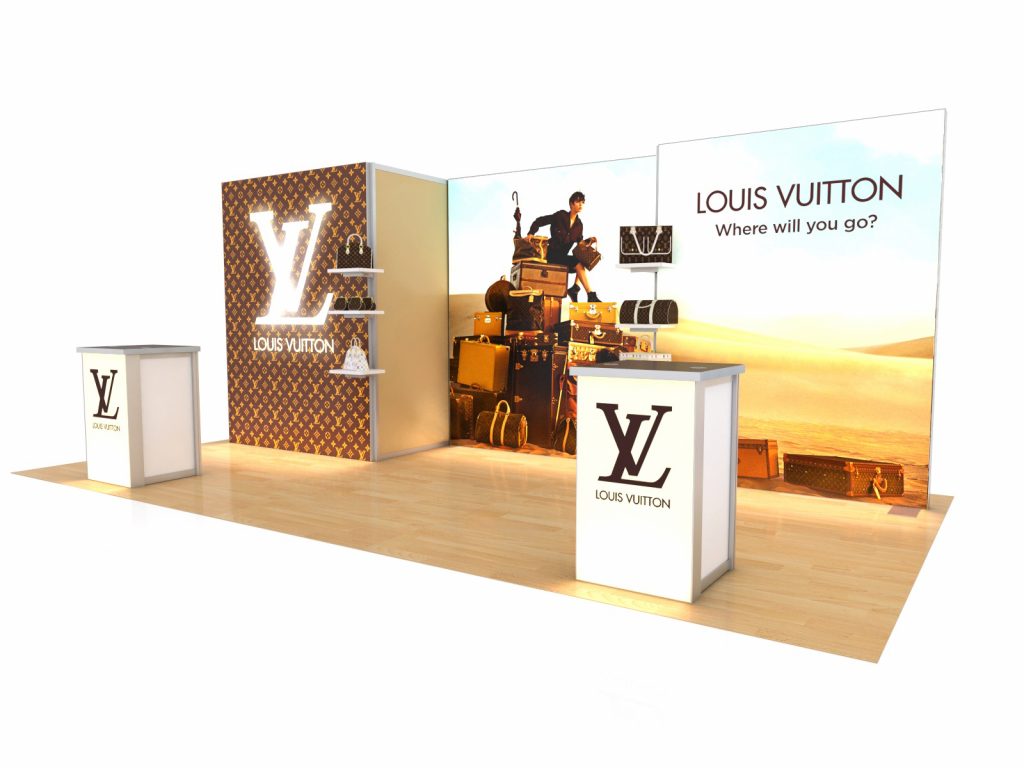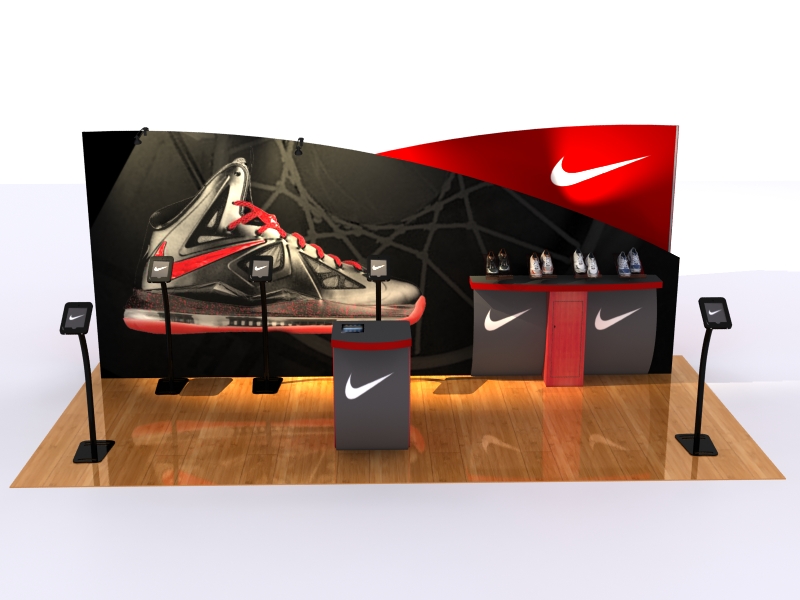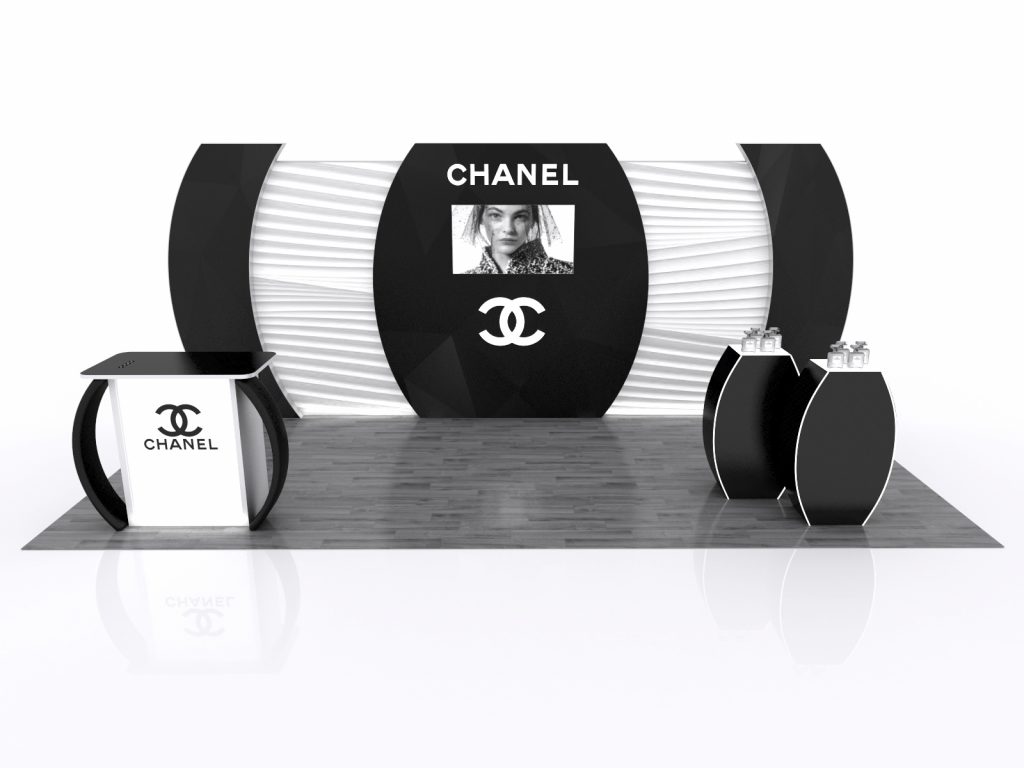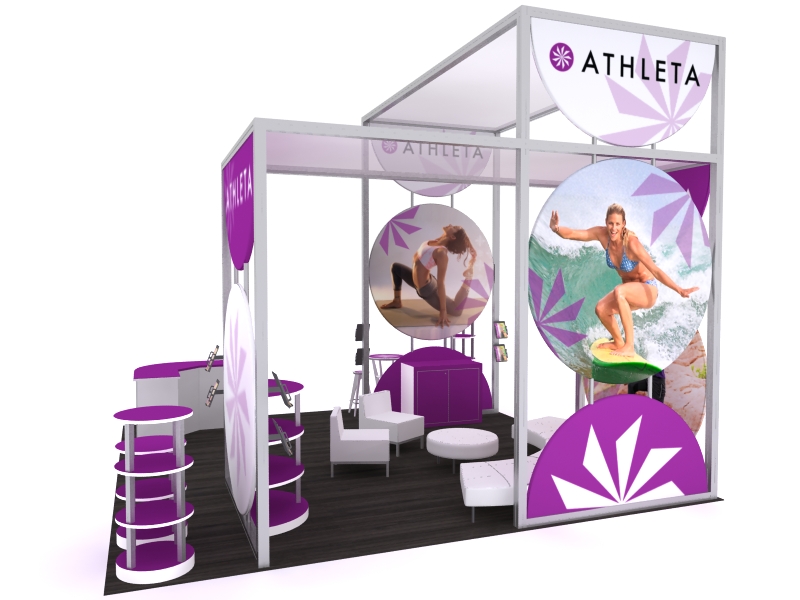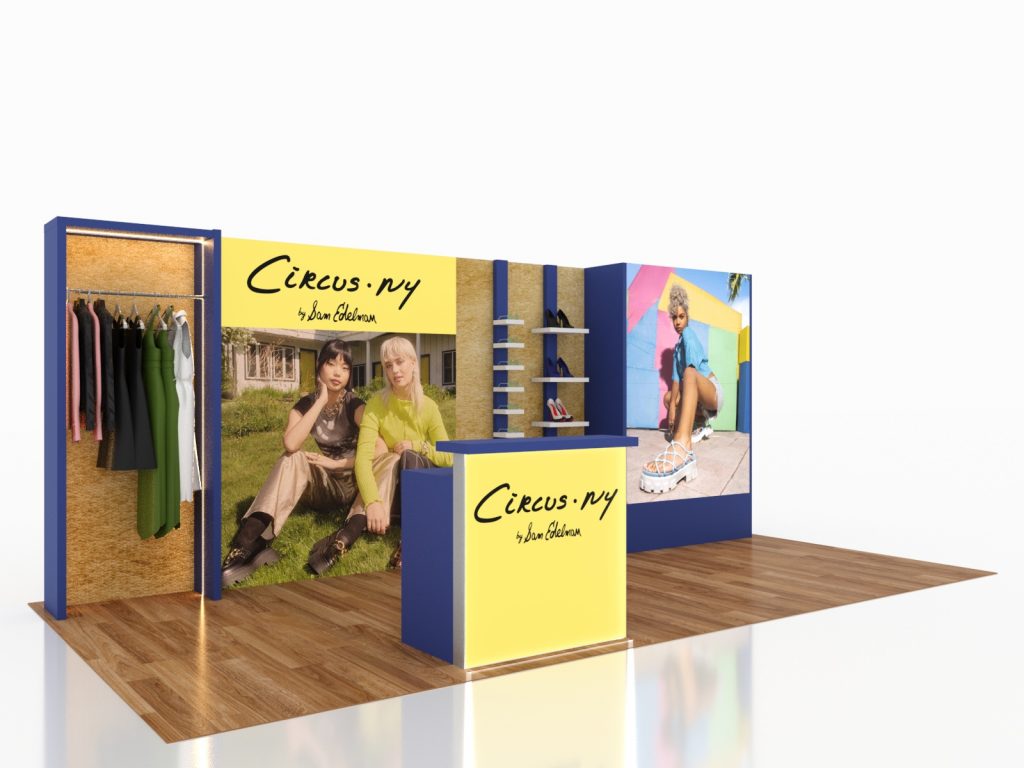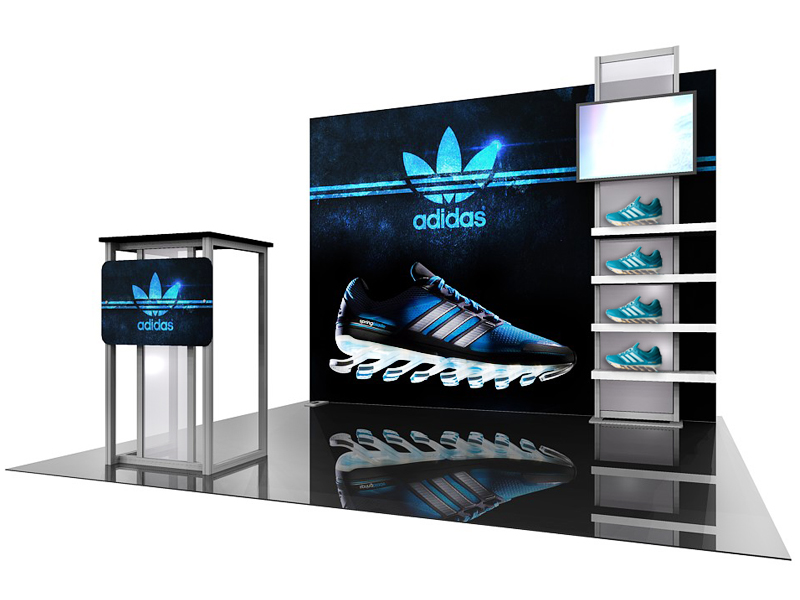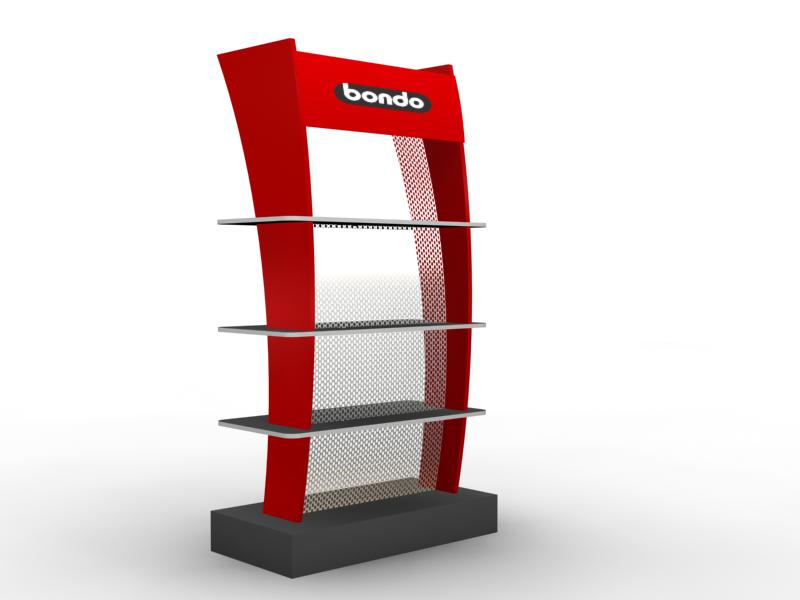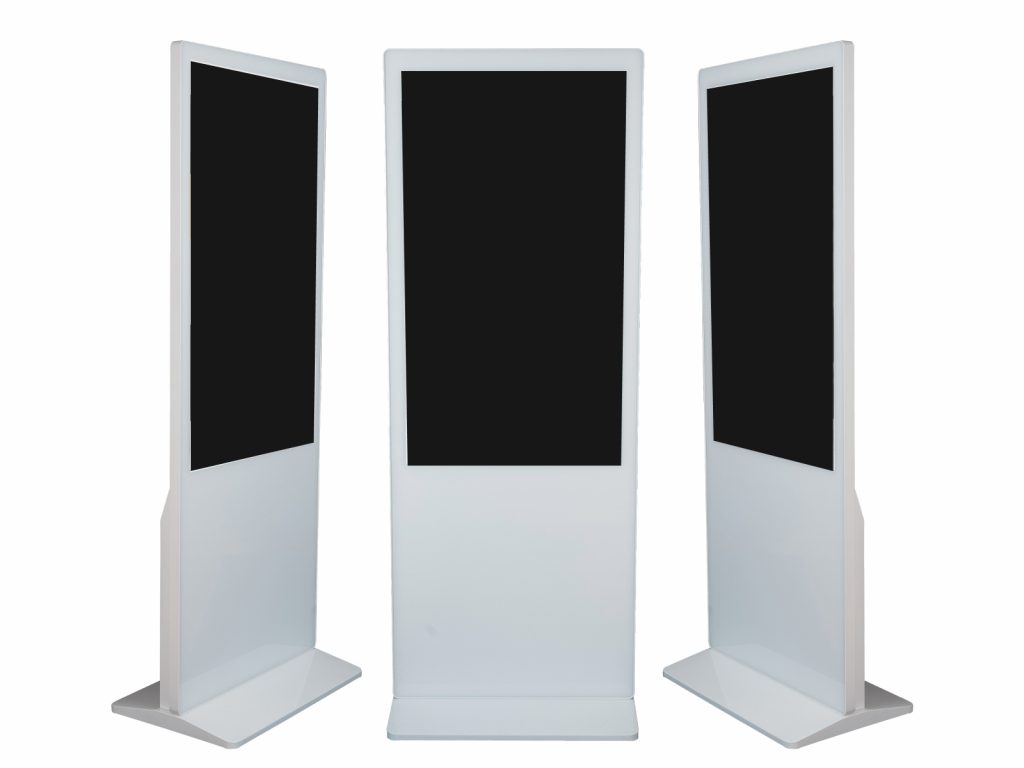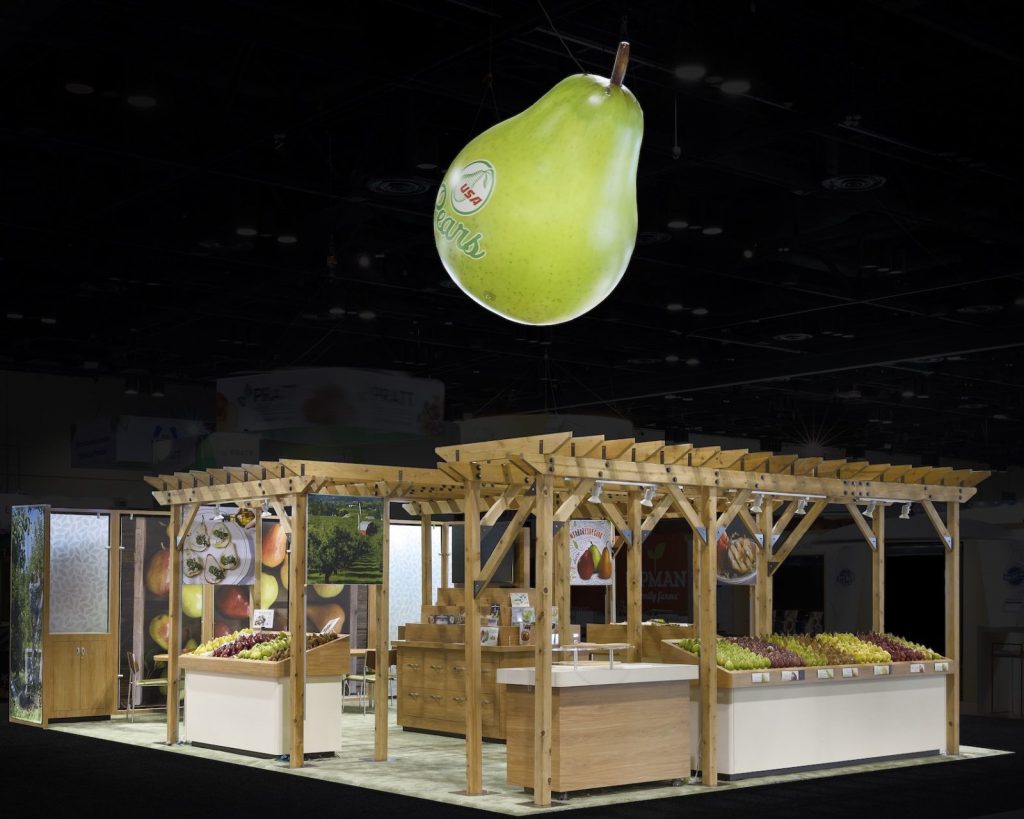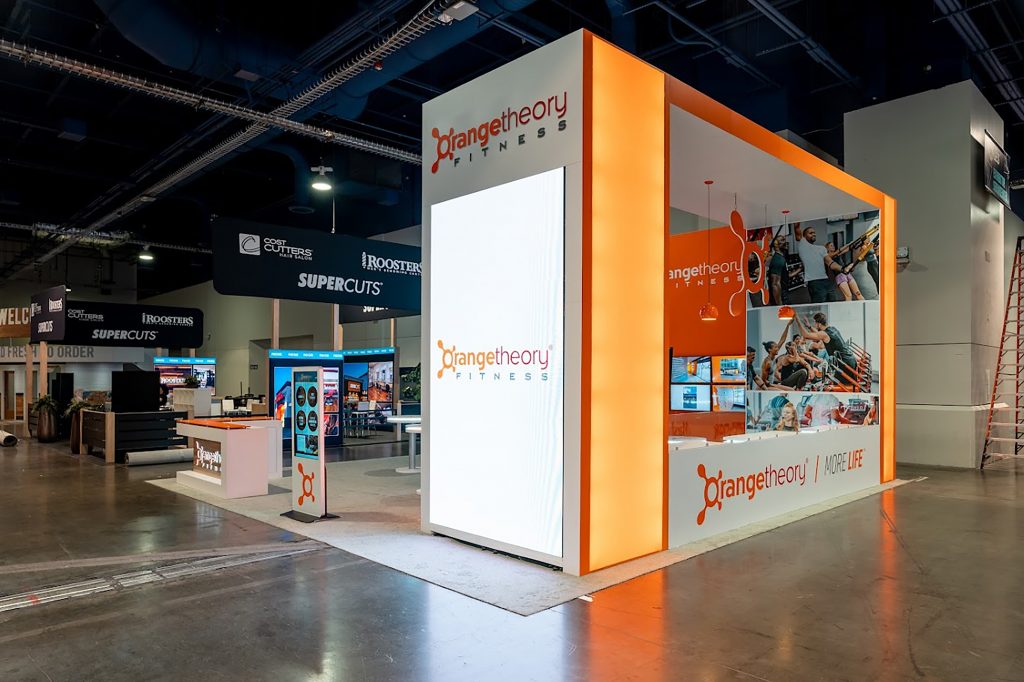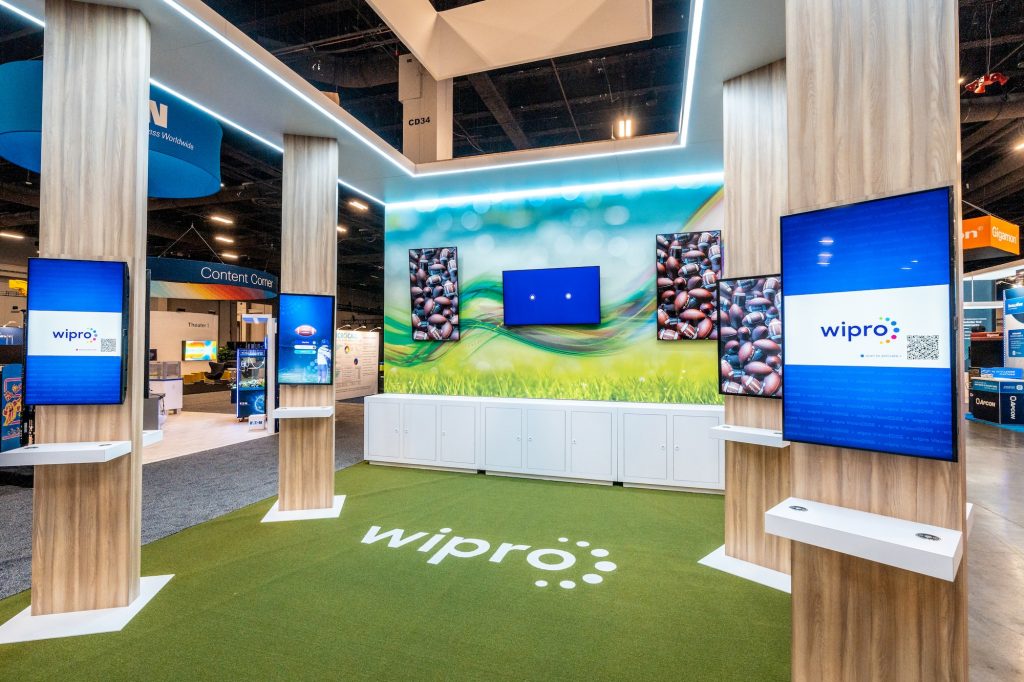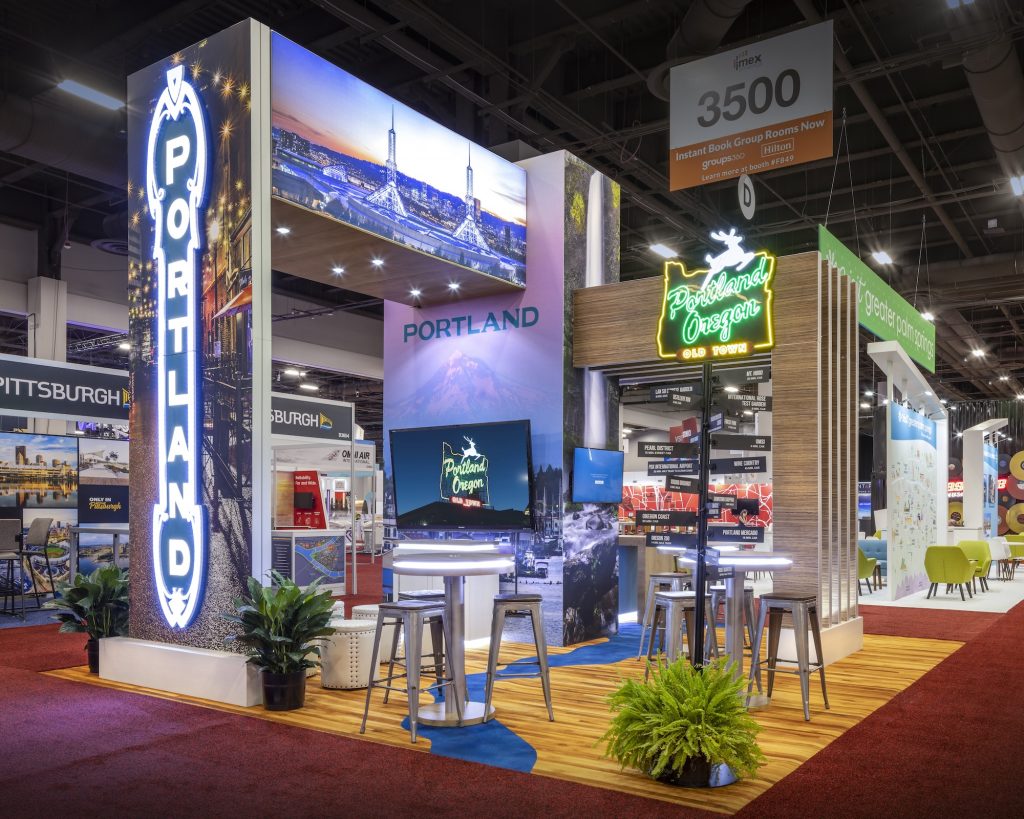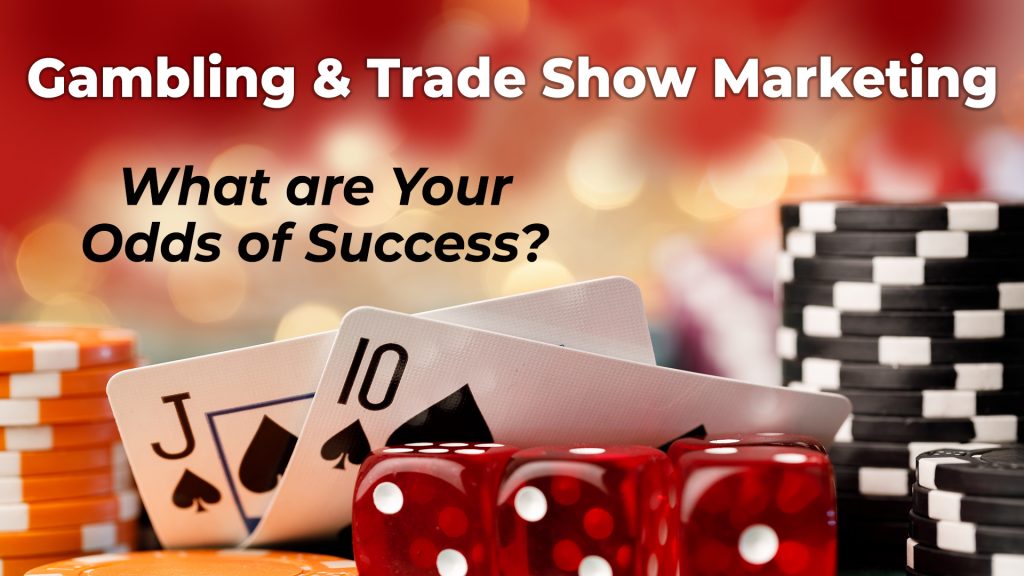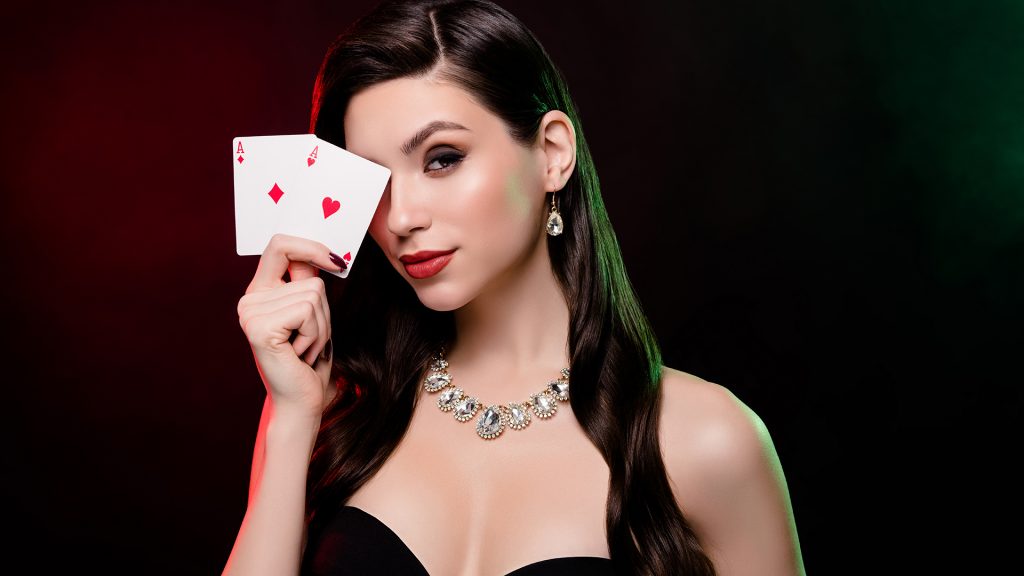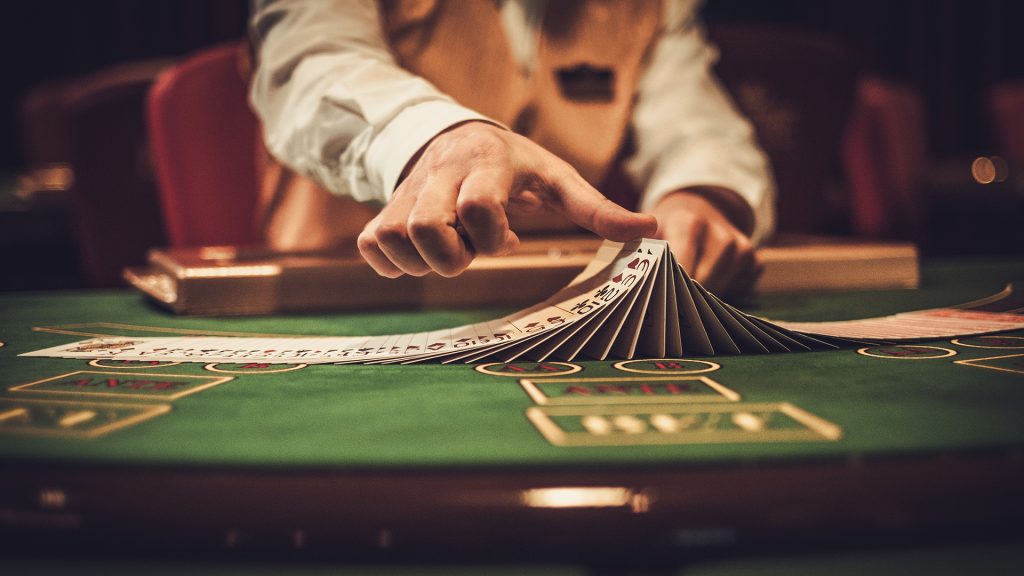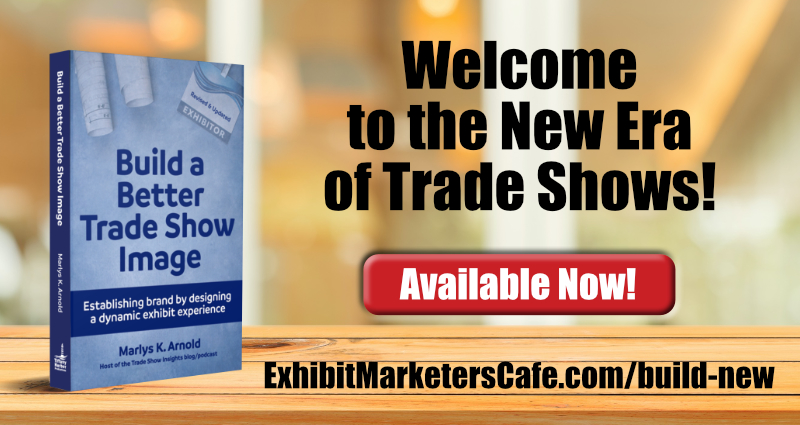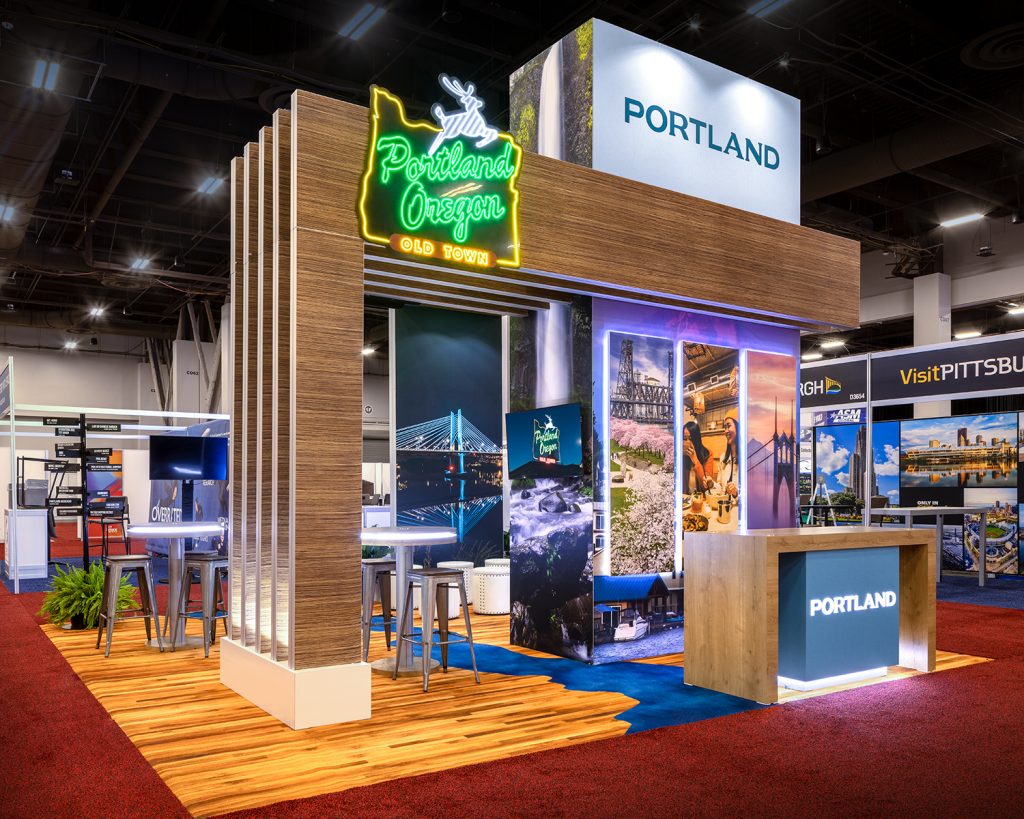
Introduction
The term “branding” has become synonymous with a company’s logos, taglines, colors, and even their customers. But that’s really just the tip of the marketing iceberg. For a trade show exhibitor, the booth design must tell a story that both encapsulates the branding (often within seconds) while communicating how the brand solves a problem or fulfills a specific unmet need.
In other words, your branded trade show exhibit should be more than a pretty structure or a functional appliance on the show floor. It should reflect who you are and/or what you want to be. All while representing the sum total of every experience customers have had with your business. That’s hard, whether you’re in a 10 x 10 inline or a 40 x 50 double-deck island.
Marketing professionals and exhibit designers know how to create a branded trade show exhibit that attracts traffic to the booth and maximizes the attendee’s experience. It starts with understanding the brand’s identity and creating a detailed strategic plan for the trade show.
Why a Branded Trade Show Exhibit Matters More Than Ever
To marketing professionals, branding is the strategic, long-term process of creating and managing the perception of a company, product, or service in the minds of their audience. It’s not just a logo or a name. It’s what people think, feel, and say about your company when you’re not in the room. Branding the “active” work marketers do to influence perceptions.
For exhibitors, a branded trade show exhibit should fulfill these five key elements:
- Brand Identity – These are the visual elements, like logos colors, typefaces, and even website design.
- Brand Voice and Messaging – The personality and tone of the company seen in taglines, social media, and advertising.
- Brand Values – The core beliefs that guide the company, like sustainability, customer service, or innovation.
- Brand Promise – What customers can expect each time they interact with the company, like speed of service, quality, or consistency.
- Brand Positioning – How the company is different from competitors, meaning is it the most affordable, easiest to use, or offers the widest range of solutions.
- Brand Experience – What actually happens when customers experience the product, service or the employees.
Companies with recognizable identifies, values, and voices allow designers and marketers to finetune their branded trade show exhibits. It’s less about the “who” and the “what” and more about the “why” and the “when.” As a result, they can create a layered message and experience that builds on their established branding.
Less recognizable companies may not have the same branding foundation. Their trade show exhibit branding would blend their identity with its values, promise, and positioning.
For example, here are two companies, one with a familiar brand and one with (perhaps) a less familiar brand.
Travel Portland: This branded booth design relied on images, textures, and signs familiar to anyone who has visited or an interest in Portland. The Portland brand is iconic.
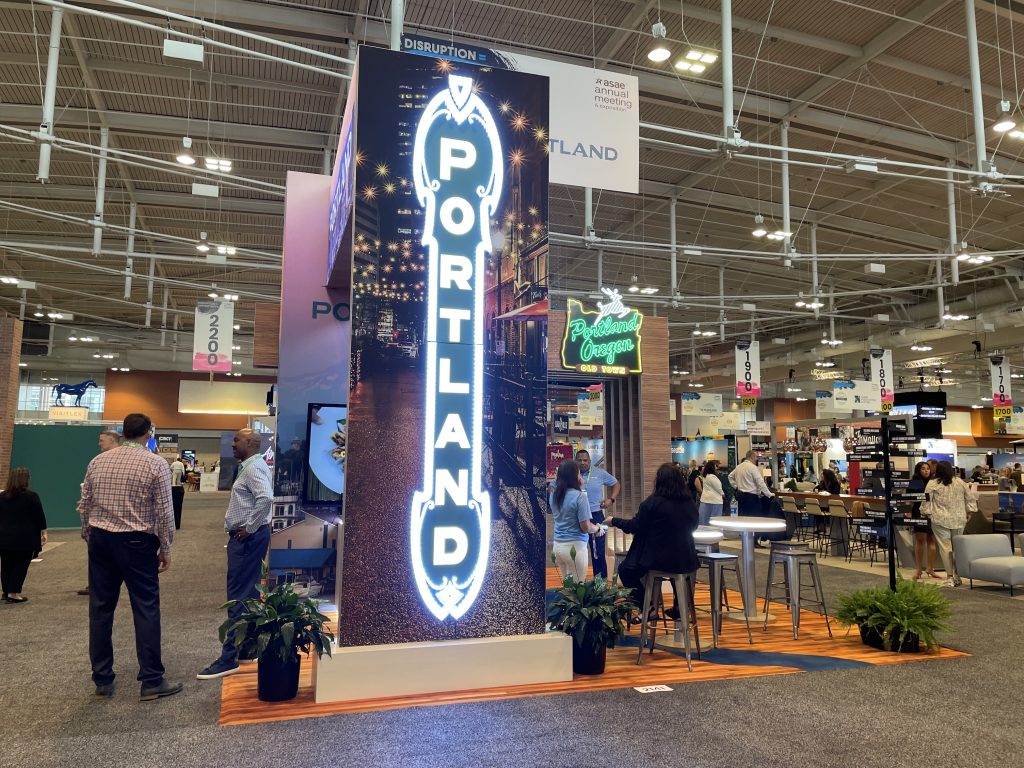
Wedderspoon: This New Zealand based brand was launching their products in the US for the first time. So explaining what they do and offering attendees samples of their products was essential to creating a memorable experience for attendees.

What Makes a Company Branded Trade Show Display Booth Stand Out
A company-branded trade show display booth stands out by being strategic, engaging, and memorable. The exhibit designs must pique an attendee’s curiosity by clearly communicating the company’s value and offering a distinctive experience..
Here are the key elements to a memorable branded trade show display::
Clarity
- Clear Messaging: Your main message—your Unique Selling Proposition (USP) or product benefit—should be visible and understandable from a distance. Avoid cluttering your space with too much text.
- Prominent Branding: Your logo and brand name should be large, high up, and easily identifiable from across the hall. Consistency in your brand colors and typography across all visuals is critical.
- Targeted Audience: The entire booth design, activities, and messaging should be tailored to the specific demographics and interests of the trade show attendees you want to attract.
Visual Appeal
- Bold Graphics & Colors: Use a small, high-contrast, and branded color palette (following the 60/30/10 design rule can help). Use high-resolution, impactful imagery and branded graphics that are a visual shortcut to your company’s culture, products, and services. .
- Effective Lighting: Use dynamic and strategic lighting (spotlights, backlighting, or unique fixtures) to highlight your products, graphics, and key areas, setting a distinct mood.
- White Space: A clean, open, and welcoming layout is essential. Empty space around your graphics and within the booth prevents visitors from feeling overwhelmed or trapped, drawing attention to your key features.
- Creative Design: Utilize vertical space with tall displays that can be seen over the crowd, or use unique architectural elements, custom flooring, or 3D logos to give the booth a memorable shape.
Engagement
- Interactive Elements: Passive displays (like a static poster) are less effective. Incorporate hands-on product demos, touch-screen kiosks, VR/AR experiences, or interactive games related to your brand to keep people engaged longer.
- Comfortable Amenities: Offer attendees a welcome respite. Amenities like comfortable seating, free water, charging stations, or good coffee/snacks draw traffic and keep visitors in your space longer for conversations.
- Gamification & Giveaways: Run contests, raffles, or prize wheels that require an interaction (like scanning a badge or answering a trivia question). Give away high-quality, useful, and memorable branded SWAG that attendees will actually keep.
Interactivity and Personalization
- Live Demos & Presentations: Host short, expert-led workshops or live demonstrations to deliver value, establish thought leadership, and attract a crowd at set times.
- Friendly & Welcoming Staff: The booth staff is part of the brand experience. They should be enthusiastic, knowledgeable, and trained to engage in non-pushy, genuine conversations.
At EXHIBITORLIVE 2024, Classic Exhibits choose an unusual booth size and show floor location to promote their brand. The 10 x 30 inline was on the perimeter of the show hall, allowing the design to exceed typical inline height restrictions. The 16 ft backwall blended an accordion-graphic design with LED video panels for both visibility and variety. The video wall technology continued on the aisle counters. In the center of the display, the unmistakable Classic logo along with the backlit graphic in the meeting space created a unified theme and messaging.
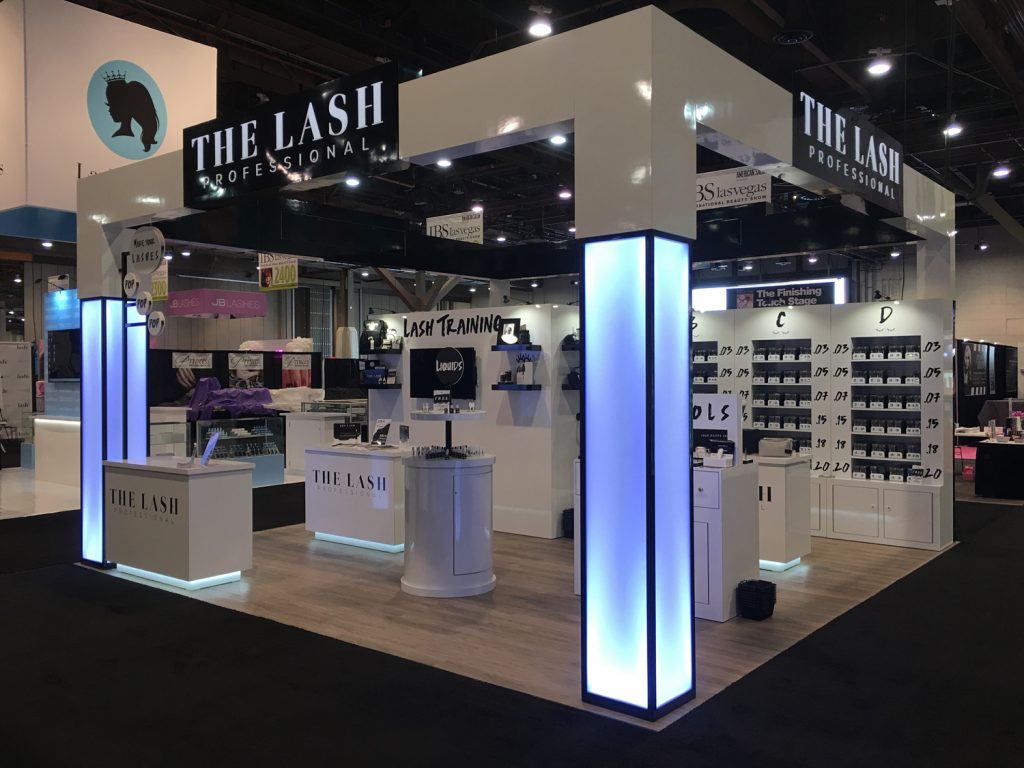
Creative Trade Show Branding Ideas That Attract Attention
Your trade show brand should focus on creating a consistent, multi-sensory experience, one that communicates your Unique Selling Proposition (USP). Don’t try to say everything; focus on the one thing that makes you unique.
10 Creative Branding Ideas at a Trade Show:
- Virtual Reality (VR) & Augmented Reality (AR): Offer a VR headset experience where attendees take a virtual tour of your facility or test a product in a simulated environment. Or create an AR scavenger hunt using your app, guiding attendees around your booth or even the show floor with branded clues.
- Interactive Digital Displays: Use oversized touchscreens for personalized product exploration, quizzes, or interactive demos that showcase your brand’s unique value proposition (USP).
- Gamification Booths: Incorporate branded, short, competitive games like a digital prize wheel, a trivia challenge about your industry, or even a branded version of a popular arcade game. Offer prizes that reinforce your brand.
- Creative Lighting: Use dynamic, color-changing LED lighting to wash your booth in your brand colors or project your logo/slogan onto the floor using programmable RGB lights.
- Unique Construction & Materials: Build a living wall of plants (great for eco-friendly or wellness brands) or use unique materials like reclaimed wood, metal, or bright, high-gloss finishes that align with your brand’s personality.
- Live Product Demos & Workshops: Schedule short, engaging, live demonstrations or mini-workshops that position your brand as a thought leader and provide attendees with immediate, actionable value.
- Branded Rest & Recharge Station: Provide comfortable seating and a branded charging station (for phones, not just your logo!) to offer a valuable break from the crowded floor. This encourages longer dwell time and conversation.
- Conference Lounge: Sponsor a small, branded seating area outside the main exhibit hall (near registration or a coffee station). This positions your brand as a helpful utility and gives you exposure before the show floor even opens.
- Staff Uniforms or Costumes: Use bold, custom-designed clothing or unique, branded accessories (like vibrant scarves, branded jackets, or even high-end sneakers) that align with your brand’s style and make your staff instantly recognizable.
- “Why” Wall: Instead of listing product features, create a visual display that tells the story behind your company—the problem you set out to solve, the founders’ journey, or the impact your product has on real customers.
Let’s Build Your Branded Trade Show Exhibit
Trade shows are all about getting noticed and being remembered. Memorable and impactful branding should be the foundation for any exhibitor’s strategy. You know your brand, but understanding how to translate it into successful exhibition results may require the expertise of a trade show professional.
For over 30 years, Classic Exhibits has been designing and building creative custom solutions for our Distributor Partners and their clients. As North America’s largest private-label exhibit manufacturer, we have the unmatched capability, capacity, and creativity to create 3D projects ranging from 10 x 10 inline displays to 60 x 80 double-deck islands.
Find success on the trade show floor with an exhibit that reflects your marketing message. For more information, see www.classicexhibits.com and explore Exhibit Design Search or request a meeting with a Classic Distributor Partner.

FAQs About Branded Trade Show Exhibits
What is a branded trade show exhibit?
A branded trade show exhibit is a custom booth designed to reflect a company’s identity through visuals, messaging, and interactive elements. It creates a cohesive and memorable brand presence.
How can I make my trade show booth more branded?
To make your booth more branded, use consistent logos, colors, signage, and messaging across all booth elements—from backdrops and counters to lighting and digital screens.
What are some creative trade show branding ideas?
Creative trade show branding ideas include interactive storytelling stations, branded VR demos, giveaway stations with custom packaging, and modular displays that adapt to the message.
Why is trade show branding important?
Trade show branding builds recognition, reinforces trust, and helps your company stand out in a competitive event space. Strong branding turns foot traffic into meaningful conversations.
How does a company branded trade show display booth differ from a generic one?
A company branded trade show display booth is tailored to reflect your unique brand identity, whereas a generic booth uses standard templates without your branding or messaging.
Still have questions? Contact our trade show experts for more information!




